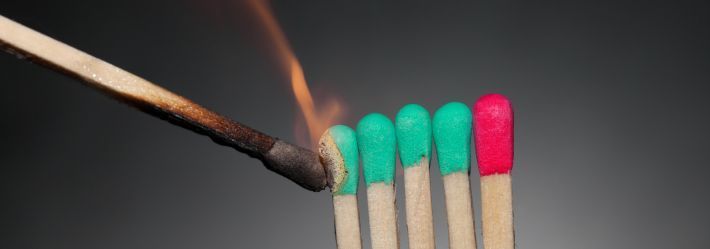A Comprehensive Overview of Autoinflammatory Arthritis vs. Autoimmune Arthritis: Understanding the Key Differences and Basics

Autoinflammatory Arthritis
Autoinflammatory arthritis encompasses conditions characterized by inflammation-driven joint issues. These conditions are linked to autoimmune or autoinflammatory diseases, collectively termed “AiArthritis Diseases.” Here’s a closer look:
What Are Autoinflammatory Diseases?
Autoinflammatory diseases arise from immune system dysregulation. Typically, the immune system protects against viruses, bacteria, and infections. However, in autoinflammatory diseases, immune cells mistakenly attack the body itself. This malfunction results in symptoms such as fever, rash, joint swelling, and occasionally, severe protein buildup in organs.
Autoinflammatory arthritis results from immune system dysfunction, leading to joint inflammation and associated symptoms. Awareness of these conditions is essential, especially during International Autoinflammatory Awareness Month.
Autoinflammatory Diseases vs. Autoimmune Arthritis
Autoinflammatory diseases and autoimmune arthritis both stem from immune system dysfunction, but they differ in which part of the immune system is affected:
Autoinflammatory Diseases:
- Result from issues in the innate immune system.
- The innate immune system is the body’s first line of defense against infections, designed to recognize and combat broad categories of harmful particles like viruses, bacteria, and fungi.
- Autoinflammatory diseases manifest without evidence of infection, high levels of autoantibodies, or autoreactive T cells.
- Treatment focuses on curbing overactivated inflammatory pathways.
Autoimmune Arthritis:
- Involves the adaptive immune system.
- The adaptive immune system specifically targets and attacks healthy cells, mistaking them for pathogens.
- In autoimmune diseases, autoantibodies and autoreactive T cells play a significant role.
Autoinflammatory diseases primarily affect the innate immune system, while autoimmune arthritis involves dysfunction of the adaptive immune system. Both conditions lead to inflammation, but the underlying immune mechanisms differ.
Examples of Autoinflammatory Diseases:
Still’s Disease
- Still’s disease is a rare type of inflammatory arthritis that can affect both children and adults. In adults, it’s known as Adult-Onset Still’s Disease (AOSD).
- This condition is characterized by high fevers, a salmon-colored rash, and joint pain.
- The symptoms can be quite severe and may include muscle pain, sore throat, and swollen lymph nodes.
Sarcoidosis
- Sarcoidosis is an inflammatory disease characterized by the formation of tiny clumps of inflammatory cells called granulomas in various organs, most commonly the lungs and lymph nodes.
- Symptoms can vary widely depending on the organs affected and may include fatigue, swollen lymph nodes, persistent dry cough, shortness of breath, and skin rashes.
- Sarcoidosis can affect anyone, but it is more common in certain populations, including African-Americans and people aged 20 to 40.
VEXAS Syndrome
- VEXAS syndrome was first identified in 2020 by a team of scientists at the National Institutes of Health (NIH) in the United States. VEXAS syndrome is a rare and serious inflammatory condition primarily affecting males over the age of 50.
- It is caused by a somatic mutation in the UBA1 gene, which is located on the X chromosome. This mutation leads to the production of defective E1 ubiquitin-activating enzymes, resulting in widespread inflammation and various symptoms.
- Patients with VEXAS syndrome often experience fever, skin rashes, and hematologic issues such as macrocytic anemia and low platelet counts.
- The condition can also cause vacuoles in bone marrow cells and may lead to severe complications, including myelodysplastic syndrome. The disease can be fatal if not managed properly.
Familial Mediterranean Fever (FMF):
- Characterized by recurrent episodes of fever, abdominal pain, and inflammation of the serous membranes (lining the abdomen, chest, and joints).
- Caused by mutations in the MEFV gene, leading to dysregulation of the innate immune system.
Tumor Necrosis Factor Receptor-Associated Periodic Syndrome (TRAPS):
- Causes recurrent fever, abdominal pain, skin rashes, and joint inflammation.
- Mutations in the TNFRSF1A gene result in abnormal tumor necrosis factor (TNF) receptor signaling.
Behçet’s Disease:
- Although it exhibits features of both autoinflammatory and autoimmune diseases, Behçet’s disease is often classified as autoinflammatory.
- Involves recurrent oral and genital ulcers, skin lesions, and eye inflammation.
- The exact cause is unclear but likely involves immune dysregulation.
Hyper-IgD Syndrome (HIDS)
- Hyper-IgD Syndrome (HIDS), also known as hyperimmunoglobulin D syndrome, is a rare genetic disorder characterized by recurrent episodes of fever, abdominal pain, lymphadenopathy (swollen lymph nodes), and elevated levels of immunoglobulin D (IgD) in the blood.
- It is caused by mutations in the mevalonate kinase (MVK) gene, which disrupts the body’s inflammatory response.
- Symptoms typically begin in infancy and can include high fevers, skin rashes, joint pain, and gastrointestinal issues. These episodes can last several days and recur throughout a person’s life.
Cryopyrin-Associated Periodic Syndromes (CAPS) - Familial Cold Autoinflammatory Syndrome, Muckle-Wells Syndrome
- Cryopyrin-Associated Periodic Syndromes (CAPS) are a group of rare genetic autoinflammatory disorders caused by mutations in the NLRP3 gene.
- These syndromes include Familial Cold Autoinflammatory Syndrome (FCAS) and Muckle-Wells Syndrome (MWS), both of which result from a malfunction in the body’s inflammatory response. FCAS is characterized by recurrent episodes of fever, rash, and joint pain triggered by exposure to cold
- MWS, on the other hand, presents with symptoms such as fever, rash, joint pain, and progressive hearing loss, and can lead to more severe complications like amyloidosis, which can damage organs.
- Both conditions are inherited in an autosomal dominant manner, meaning only one copy of the mutated gene is needed to develop the disorder
Schnitzler Syndrome
- Schnitzler Syndrome is a rare acquired autoinflammatory disorder first described in 1972.
- It is characterized by a chronic urticarial rash, which resembles hives, and is associated with monoclonal IgM gammopathy.
- Patients with Schnitzler Syndrome often experience recurrent fevers, joint pain (arthralgia), bone pain, and other systemic inflammatory symptoms such as weight loss and lymphadenopathy (swollen lymph nodes).
Chronic Nonbacterial Osteomyelitis (CNO)/Chronic Recurrent Multifocal Osteomyelitis (CRMO)
- Chronic Nonbacterial Osteomyelitis (CNO), also known as Chronic Recurrent Multifocal Osteomyelitis (CRMO), is a rare autoinflammatory bone disorder primarily affecting children and adolescents.
- Unlike bacterial osteomyelitis, CNO/CRMO is not caused by an infection but by an abnormal immune response that leads to chronic inflammation in the bones.
- This condition can cause episodes of bone pain, swelling, and sometimes fever, often affecting multiple sites in the body simultaneously.
Autoinflammatory diseases are relatively rare, and their symptoms can overlap with other conditions. If you suspect any of these, consult a healthcare professional for proper evaluation and management.
Mixed Aspects of Autoimmunity and Autoinflammation
Some diseases possess characteristics of both autoimmunity and autoinflammation, highlighting the complex nature of immune system-related disorders.
By Eileen Davidson
Community Awareness Assistant
International Foundation of Autoimmune and Autoinflammatory






